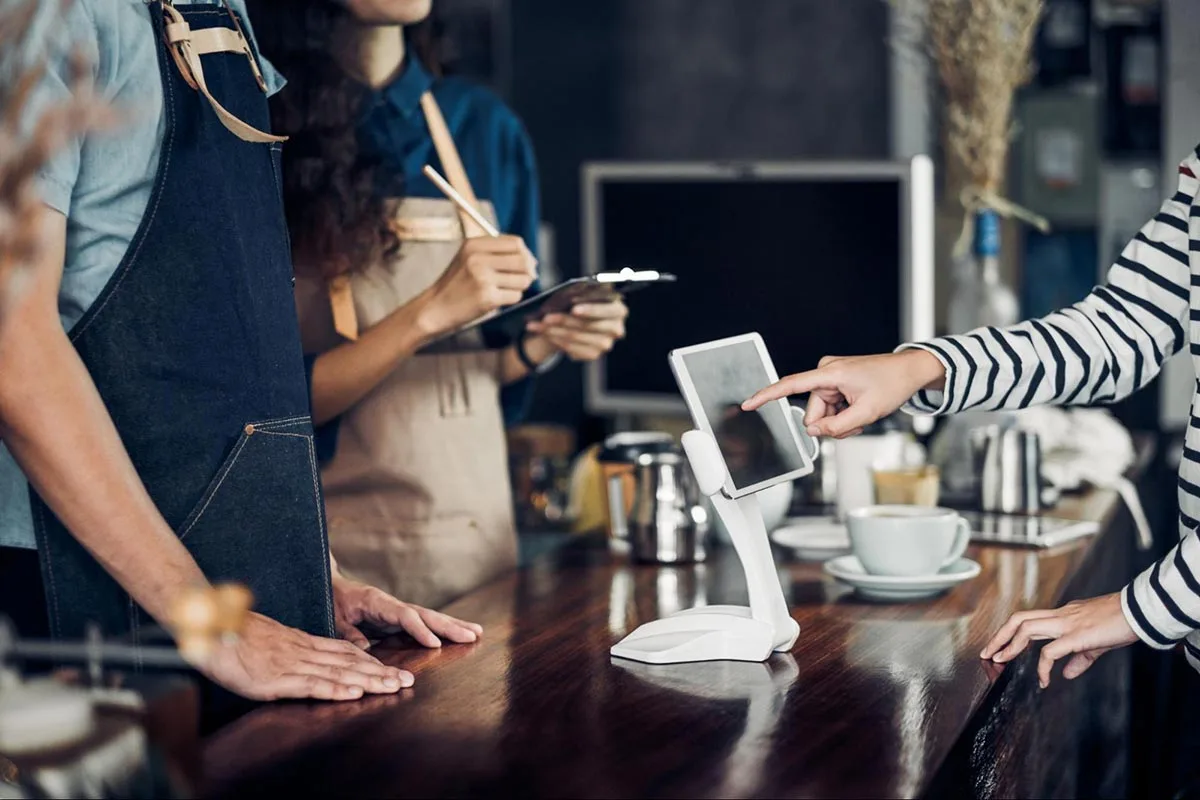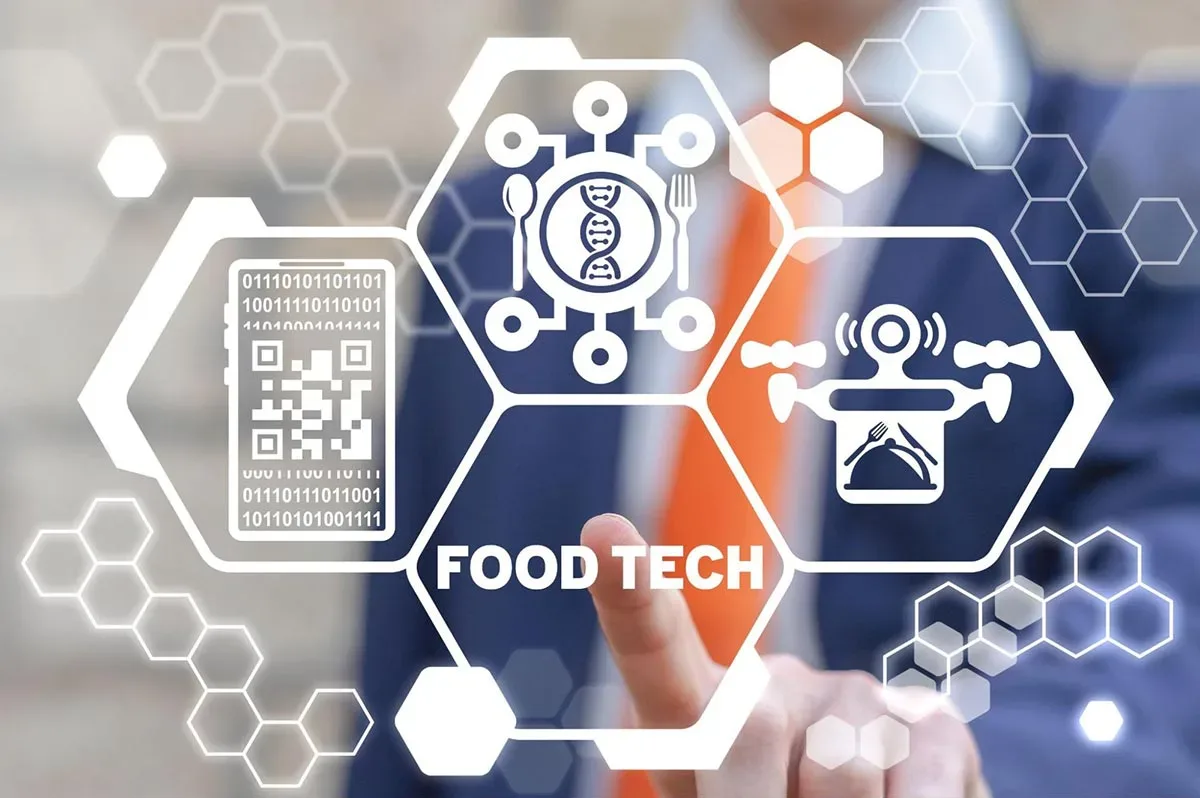How to use AI in restaurants for streamlining and efficiency
Skip the article and turn takeaways into action by scheduling a call with our team.
It’s no secret that the restaurant industry is a continually evolving landscape. Labor and food costs are shrinking profit margins, while customer expectations are growing bigger. Restaurant owners are at a critical turning point where flexibility and the ability to embrace change will be the make-or-break moment for many. The good news is there is an answer at our fingertips: artificial intelligence. AI-powered tools are here, and they are transforming the industry, creating operational efficiencies, and streamlining daily tasks. Using AI in restaurants also provides staff the freedom to spend their time where it is most useful, creating exceptional customer experiences.
Let’s explore how restaurants can leverage AI to address challenges and review practical applications that can be easily implemented.

How the restaurant industry is taking advantage of AI
There are many easy ways to implement AI into a restaurant that can help to optimize operations without drastic or unpleasant change. Here are a few ways the industry is taking advantage of AI solutions today.
Smarter ordering
McDonald’s made headlines when they began implementing AI-powered kiosks and drive-thru voice assistants that not only take orders but make personalized recommendations based on weather, time of day, and popular menu items. There is also the potential to use a form of facial recognition to allow AI programs to check images of meals and ensure that all items match customer orders.
While McDonald’s is one of the largest franchises in the world, AI is available and can be highly effective for restaurants of any size. Restaurant owners and managers don’t need a Big Mac-sized budget to implement AI, they just need an open mind, willingness to learn and goals for growth.
Most POS systems now come with built-in AI features that can analyze customer ordering patterns and suggest upsell opportunities in real time. These systems can recognize returning customers, typically by credit card or phone number, and recommend their favorite items, creating a personalized dining experience that feels attentive rather than automated.
Chatbots and virtual assistants have also evolved significantly and can now handle online ordering, answer questions about menus or hours, and even manage reservations. By using AI tools on their websites, restaurants expect to see significant reductions in phone calls for basic information, giving front-of-house staff the opportunity to focus on guest experiences.
Kitchen automation
The back-of-house operations benefit from AI-driven solutions as well. Computer vision systems can now monitor food preparation to ensure consistency and quality while reducing human error. These systems can alert kitchen staff when a dish doesn’t match established standards or when cooking times need adjustment.
Inventory management has also been transformed by AI algorithms that track usage patterns and integrate with your POS to forecast needs with remarkable accuracy. These AI-powered systems can:
- Automatically generate purchase orders based on predicted demand.
- Alert back-of-house team to potential food waste issues before they occur.
- Optimize menu pricing based on ingredient costs and popularity.
- Reduce inventory carrying costs.
The efficient management of inventory, food waste, and prices translates directly to increased profitability.
Predictive staffing
Perhaps the most immediate benefit for many restaurants comes from AI-powered scheduling and staffing tools. These systems analyze historical data, weather forecasts, local events, and even social media sentiment to predict customer volume with remarkable accuracy.
Rather than spending time analyzing trends to anticipate peak times, days, or even weekends, machine learning algorithms can help forecast staffing more precisely based on expected demand. This leads to having adequate team members during rush periods without overstaffing during lulls—directly addressing both labor shortages and cost concerns.
Easy entry points for AI in restaurants

While AI systems can be intimidating, they’re not going away. The best path forward is to embrace it, or you risk being outpaced by competitors who are already using it. Let’s consider a few AI entry points that don’t require substantial investment or technical expertise.
Leverage AI features in existing platforms
Many restaurant technology platforms you already use, from your point-of-sale (POS) system to your reservation software, have been quietly adding AI capabilities.
For example, many modern POS systems can now:
- Generate automated forecasts for inventory needs.
- Identify your most profitable menu items.
- Suggest optimal pricing adjustments.
- Highlight operational bottlenecks.
Integrating a restaurant’s existing platforms can also help to ensure restaurant operations are streamlined and running with optimal efficiency.
Smart review management
Online reviews significantly impact your restaurant’s success but managing them can be time-consuming. AI-powered review management tools can:
- Monitor all review platforms and alert you to negative feedback.
- Generate personalized response templates for your approval.
- Identify recurring themes in customer feedback.
- Track sentiment changes over time.
These tools help create consistent customer interactions and drastically reduce the time spent managing your online presence.
Measurable benefits of AI adoption
The beauty of using AI technology is that systems rely heavily on data, and that data is measurable, so you can see the benefits in black and white. Let’s explore a few ways to measure the benefits of AI in restaurants.
Labor cost savings
Restaurants implementing AI scheduling tools typically see a 3-5% reduction in average labor costs. This comes not from cutting staff, but from more efficient deployment of your team members. When you can predict peak times and staff accordingly, you eliminate both costly overstaffing and the service issues that come with understaffing.
Plus, managers who use AI scheduling save about 5-10 hours per week, leaving them with extra time to focus on other tasks that improve the experiences of guests and staff alike.
Enhanced guest experience
AI in restaurants also helps create consistency in your customer interactions. From ensuring orders are accurate to maintaining appropriate wait times, AI systems help deliver reliable experiences that build customer loyalty.
For example, tools like Yelp Guest Manager allow guests to join a virtual waitlist, track their position in real time, and receive data-based wait times estimates. This not only reduces the need for customers to physically wait in crowded areas, it also enables restaurant staff to better manage waitlists and communicate with guests proactively.
Data-backed decision-making
Perhaps the most transformative aspect of using AI in restaurant management is the shift from intuition-based to data-backed decision-making. AI systems continuously analyze your restaurant operations, identifying patterns and opportunities that might otherwise go unnoticed.
For example, predictive analytics might reveal that a specific menu item sells particularly well on rainy Thursdays or that certain server combinations consistently generate higher sales. These insights allow you to optimize everything from your menu to your staffing with confidence.
3 common pitfalls to avoid
While the benefits are substantial, there are potential pitfalls to be aware of when introducing AI into restaurant operations. Here are a few common mistakes to avoid.
1. Over-investing too soon
Start small with specific tools that address your most pressing challenges. There’s no need to overhaul your entire operation at once. Begin with one or two AI solutions, measure their impact, and expand from there.
2. Neglecting staff training
AI can be the answer to many common issues, but even the most sophisticated AI tools will fail if your team doesn’t understand or embrace them. Restaurant owners and managers must train and clearly communicate with staff on how these tools will make their jobs easier, not replace them.
AI can be intimidating. Make sure staff is comfortable with the new technology to empower them to focus on the more rewarding aspects of their work.
3. Losing the human touch
Remember that dining out is fundamentally a human experience. It’s crucial to use AI to enhance, not replace, the personal connections that make a restaurant memorable. The most successful restaurants use AI to handle routine tasks, empowering their staff to create memorable moments for guests.
Future trends to watch

The benefits of AI adoption can be seen almost immediately, but it’s not a set-it-and-forget-it task. AI technology is evolving at warp speed, so keep an eye on the ways you can further optimize your restaurant business and improve your bottom line. Let’s look at a few future AI trends that will help the restaurant industry.
Hyper-personalized dining experiences
AI will further enable guest personalization, from remembering individual guest preferences across multiple visits to customizing menu recommendations based on dietary needs and past choices. The restaurants that master this balance of technology and personal touch will build customer loyalty for the long term.
Advanced kitchen automation
While fully automated food preparation remains limited to certain concepts, there are rapid advancements in AI-assisted cooking systems that help maintain consistency and reduce training requirements. These systems use computer vision and machine learning to guide less experienced staff through complex preparations.
Supply chain intelligence
AI-driven supply chain management will become increasingly important as restaurants face continued challenges with product availability and cost fluctuations. Future AI systems will automatically adjust purchasing and even temporarily modify menu offerings based on supply chain disruptions.
Take the first step with AI and automation
The restaurant industry has always evolved through innovation, from the first drive-thru windows to modern online ordering systems. AI represents the next frontier in this evolution, not as a replacement for the human elements that make dining special, but as a powerful tool to enhance operations and guest experiences.
Remember that implementing AI and automation isn’t an all-or-nothing proposition. The most successful restaurateurs are taking an incremental approach, adding capabilities as they prove their value.
Book a demo today to see how Yelp Guest Manager can streamline your front-of-house operations with table, reservation, and waitlist management features.